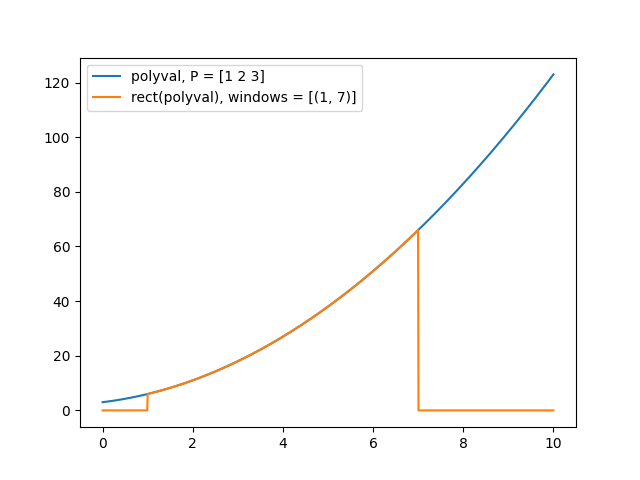qml.pulse.rect¶
- rect(x, windows=None)[source]¶
Takes a scalar or a scalar-valued function, x, and applies a rectangular window to it, such that the returned function is x inside the window and 0 outside it.
Creates a callable for defining a
ParametrizedHamiltonian.- Parameters:
x (Union[float, Callable]) – either a scalar, or a function that accepts two arguments: the trainable parameters and time
windows (Union[Tuple[float], List[Tuple[float]]]) – List of tuples containing time windows where
xis evaluated. IfNoneit is always evaluated. Defaults toNone.
- Returns:
A callable
f(p, t)which evaluates the given function/scalarxinside the time windows defined inwindows, and otherwise returns 0.- Return type:
callable
Note
If
xis a function, it must accept two arguments: the trainable parameters and time. The primary use ofrectis for numerical simulations viaParametrizedEvolution, which assumestto be a single scalar argument. If you need to efficiently compute multiple times, you need to broadcast overtvia jax.vmap (see examples below).Example
Here we use
rect()to create a parametrized coefficient that has a value of0outside the time intervalt=(1, 7), and is defined byjnp.polyval(p, t)within the interval:def f(p, t): return jnp.polyval(p, t) p = jnp.array([1, 2, 3]) time = jnp.linspace(0, 10, 1000) windows = [(1, 7)] windowed_f = qml.pulse.rect(f, windows=windows) y1 = f(p, time) y2 = jax.vmap(windowed_f, (None, 0))(p, time) plt.plot(time, y1, label=f"polyval(p={p}, t)") plt.plot(time, y2, label=f"rect(polyval, windows={windows})(p={p}, t)") plt.legend() plt.xlabel("t") plt.show()

Note that in order to efficiently create
y2, we broadcastedwindowed_fover the time argument using jax.vmap.rectcan be used to create aParametrizedHamiltonianin the following way:>>> H = qml.pulse.rect(jnp.polyval, windows=[(1, 7)]) * qml.X(0)
The resulting Hamiltonian will be non-zero only inside the window.
>>> H([[1, 3]], t=2) # inside the window 5.0 * X(0)
>>> H([[1, 3]], t=0.5 ) # outside the window 0.0 * X(0)
It is also possible to define multiple windows for the same function:
windows = [(1, 7), (9, 14)] H = qml.pulse.rect(jnp.polyval, windows) * qml.X(0)
When calling the
ParametrizedHamiltonian,rectwill evaluate the given function only inside the time windows, and otherwise return 0.One can also pass a scalar to the
rectfunction>>> H = qml.pulse.rect(10, (1, 7)) * qml.X(0)
In this case,
rectwill return the given scalar only when the time is inside the provided time windows>>> params = [None] # the parameter value won't be used! >>> H(params, t=8) 0.0 * X(0)
>>> H(params, t=5) 10.0 * X(0)